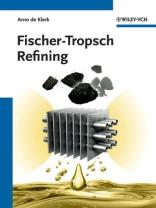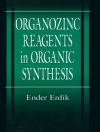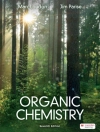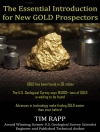The Fischer-Tropsch process is gaining recognition again due to the world-wide increase in energy needs and decrease in oil availability. The increasing interest in utilizing biomass as a potential renewable feedstock in energy generation is further supporting this development.
The book covers the production and refining of Fischer-Tropsch syncrude to fuels and chemicals systematically and comprehensively, presenting a wealth of new knowledge and material. As such, it deals extensively with aspects of engineering, chemistry and catalysis. This handbook and ready reference adopts a fundamental approach, looking at the molecules and their transformation from feed to product. Numerous examples illustrate the possibilities and limitations of Fischer-Tropsch syncrude as feesdstock.
Of great interest to everyone interested in refining – not just Fischer-Tropsch specialists.
From the Contents:
- Fischer-Tropsch Facilities and Refineries at a Glance
- Production of Fischer-Tropsch Syncrude
- Industrial Fischer-Tropsch Facilities
- Synthetic Transportation Fuels
- Refining Technology
- Refinery Design
Cuprins
Preface xix
Part I Introduction 1
1 Fischer–Tropsch Facilities at a Glance 3
1.1 Introduction 3
1.2 Feed-to-Syngas Conversion 4
1.2.1 Feed Logistics and Feed Preparation 5
1.2.2 Syngas Production 5
1.2.3 Syngas Cleaning and Conditioning 7
1.3 Syngas-to-Syncrude Conversion 8
1.4 Syncrude-to-Product Conversion 10
1.4.1 Upgrading versus Refining 10
1.4.2 Fuels versus Chemicals 11
1.4.3 Crude Oil Compared to Syncrude 12
1.5 Indirect Liquefaction Economics 14
1.5.1 Feed Cost 14
1.5.2 Product Pricing 15
1.5.3 Capital Cost 17
References 19
2 Refining and Refineries at a Glance 21
2.1 Introduction 21
2.2 Conventional Crude Oil 22
2.2.1 Hydrocarbons in Crude Oil 23
2.2.2 Sulfur Compounds in Crude Oil 23
2.2.3 Nitrogen Compounds in Crude Oil 25
2.2.4 Oxygenates in Crude Oil 25
2.2.5 Metals in Crude Oil 26
2.2.6 Physical Properties 27
2.3 Products from Crude Oil 28
2.3.1 Boiling Range and Product Quality 29
2.4 Evolution of Crude Oil Refineries 31
2.4.1 First-Generation Crude Oil Refineries 32
2.4.2 Second-Generation Crude Oil Refineries 33
2.4.3 Third-Generation Crude Oil Refineries 36
2.4.4 Fourth-Generation Crude Oil Refineries 39
2.4.5 Petrochemical Refineries 43
2.4.6 Lubricant Base Oil Refineries 44
References 46
Part II Production of Fischer–Tropsch Syncrude 49
3 Synthesis Gas Production, Cleaning, and Conditioning 51
3.1 Introduction 51
3.2 Raw Materials 51
3.2.1 Natural Gas 51
3.2.2 Solid Carbon Sources 52
3.3 Syngas from Natural Gas 53
3.3.1 Natural Gas Cleaning 55
3.3.2 Adiabatic Prereforming 55
3.3.3 Steam Reforming 56
3.3.4 Adiabatic Oxidative Reforming 56
3.3.5 Gas Reforming Comparison 57
3.4 Syngas from Solid Carbon Sources 58
3.4.1 Gasification of Heteroatoms 59
3.4.2 Low-Temperature Moving Bed Gasification 60
3.4.3 Medium-Temperature Fluidized Bed Gasification 62
3.4.4 High-Temperature Entrained Flow Gasification 64
3.4.5 Gasification Comparison 66
3.5 Syngas Cleaning 66
3.5.1 Acid Gas Removal 67
3.6 Syngas Conditioning 69
3.6.1 Water Gas Shift Conversion 69
3.7 Air Separation Unit 70
References 71
4 Fischer–Tropsch Synthesis 73
4.1 Introduction 73
4.2 Fischer–Tropsch Mechanism 74
4.3 Fischer–Tropsch Product Selectivity 77
4.3.1 Probability of Chain Growth 78
4.3.2 Hydrogenation versus Desorption 80
4.3.3 Readsorption Chemistry 81
4.4 Selectivity Manipulation in Fischer–Tropsch Synthesis 81
4.4.1 Fischer–Tropsch Catalyst Formulation 81
4.4.2 Fischer–Tropsch Operating Conditions 83
4.4.3 Fischer–Tropsch Reaction Engineering 84
4.5 Fischer–Tropsch Catalyst Deactivation 88
4.5.1 Poisoning by Syngas Contaminants 89
4.5.2 Volatile Metal Carbonyl Formation 90
4.5.3 Metal Carboxylate Formation 91
4.5.4 Mechanical Catalyst Degradation 92
4.5.5 Deactivation of Fe-HTFT Catalysts 93
4.5.6 Deactivation of Fe-LTFT Catalysts 93
4.5.7 Deactivation of Co-LTFT Catalysts 95
References 99
5 Fischer–Tropsch Gas Loop 105
5.1 Introduction 105
5.2 Gas Loop Configurations 107
5.2.1 Open Gas Loop Design 107
5.2.2 Closed Gas Loop Design 108
5.3 Syncrude Cooling and Separation 109
5.3.1 Pressure Separation 110
5.3.2 Cryogenic Separation 110
5.3.3 Oxygenate Partitioning 111
5.3.4 HTFT Syncrude Recovery 113
5.3.5 LTFT Syncrude Recovery 114
References 116
Part III Industrial Fischer–Tropsch Facilities 117
6 German Fischer–Tropsch Facilities 119
6.1 Introduction 119
6.2 Synthesis Gas Production 119
6.3 Fischer–Tropsch Synthesis 121
6.3.1 Normal-Pressure Synthesis 122
6.3.2 Medium-Pressure Synthesis 125
6.3.3 Gas Loop Design 127
6.3.4 Carbon Efficiency 128
6.4 Fischer–Tropsch Refining 128
6.4.1 Refining C 3 –C 4 Crude LPG 129
6.4.2 Refining Carbon Gasoline 130
6.4.3 Refining of Condensate Oil 132
6.4.4 Refining of Waxes 135
6.4.5 Aqueous Product Refining 136
6.5 Discussion of the Refinery Design 137
References 138
7 American Hydrocol Facility 141
7.1 Introduction 141
7.2 Synthesis Gas Production 142
7.3 Fischer–Tropsch Synthesis 143
7.4 Fischer–Tropsch Refining 145
7.4.1 Oil Product Refining 146
7.4.2 Refining Aqueous Product 149
7.5 Discussion of the Refinery Design 150
References 151
8 Sasol 1 Facility 153
8.1 Introduction 153
8.2 Synthesis Gas Production 154
8.2.1 Lurgi Dry Ash Coal Gasification 154
8.2.2 Rectisol Synthesis Gas Cleaning 155
8.3 Fischer–Tropsch synthesis 157
8.3.1 Kellogg HTFT synthesis 157
8.3.2 Arge LTFT Synthesis 159
8.3.3 Gas Loop Design 162
8.4 Fischer–Tropsch Refining 163
8.4.1 Kellogg HTFT Oil Refining 163
8.4.2 Arge LTFT Oil Refining 165
8.4.3 Aqueous Product Refining 166
8.4.4 Coal Pyrolysis Product Refining 169
8.4.5 Synthetic Fuel Properties 170
8.5 Evolution of the Sasol 1 Facility 172
8.5.1 Changes in Synthesis Gas Production 172
8.5.2 Changes in Fischer–Tropsch Synthesis 173
8.5.3 Changes in Fischer–Tropsch Refining 174
8.5.4 Changes in Coal Pyrolysis Product Refining 177
8.6 Discussion of the Refinery Design 177
References 179
9 Sasol 2 and 3 Facilities 181
9.1 Introduction 181
9.2 Synthesis Gas Production 182
9.2.1 Lurgi Dry Ash Coal Gasification 182
9.2.2 Synthesis Gas Cleaning 182
9.3 Fischer–Tropsch Synthesis 183
9.3.1 Gas Loop Design 184
9.4 Fischer–Tropsch Refining 186
9.4.1 Synthol HTFT Condensate Refining 188
9.4.2 Synthol HTFT Oil Refining 192
9.4.3 Aqueous Product Refining 194
9.4.4 Coal Pyrolysis Product Refining 196
9.4.5 Synthetic Fuel Properties 198
9.5 Evolution of Sasol Synfuels 199
9.5.1 Changes in Synthesis Gas Production 201
9.5.2 Changes in Fischer–Tropsch Synthesis 201
9.5.3 Changes in Fischer–Tropsch Condensate Refining 202
9.5.4 Extraction of Linear 1-Alkenes 204
9.5.5 Changes in Fischer–Tropsch Oil Refining 205
9.5.6 Changes in Fischer–Tropsch Aqueous Product Refining 210
9.5.7 Changes in Coal Pyrolysis Product Refining 211
9.5.8 Synthetic Jet Fuel 212
9.6 Discussion of the Refinery Design 212
References 214
10 Mossgas Facility 217
10.1 Introduction 217
10.2 Synthesis Gas Production 218
10.2.1 Natural Gas Liquid Recovery 218
10.2.2 Gas Reforming 218
10.3 Fischer–Tropsch Synthesis 220
10.3.1 Gas Loop Design 221
10.4 Fischer–Tropsch Refining 222
10.4.1 Oil Refining 222
10.4.2 Aqueous Product Refining 225
10.4.3 Synthetic Fuel Properties 227
10.5 Evolution of the Petro SA Facility 227
10.5.1 Addition of Low-Temperature Fischer–Tropsch Synthesis 227
10.5.2 Changes in the Fischer–Tropsch Refinery 227
10.6 Discussion of the Refinery Design 228
References 229
11 Shell Middle Distillate Synthesis (SMDS) Facilities 231
11.1 Introduction 231
11.2 Synthesis Gas Production in Bintulu GTL 232
11.3 Fischer–Tropsch Synthesis in Bintulu GTL 233
11.4 Fischer–Tropsch Refining in Bintulu GTL 235
11.4.1 Oil Refining 235
11.4.2 Aqueous Product Treatment 238
11.5 Pearl GTL Facility 238
11.6 Discussion of the Refinery Design 239
References 239
12 Oryx and Escravos Gas-to-Liquids Facilities 241
12.1 Introduction 241
12.2 Synthesis Gas Production in Oryx GTL 242
12.3 Fischer–Tropsch Synthesis in Oryx GTL 243
12.4 Fischer–Tropsch Refining in Oryx GTL 244
12.4.1 Oil Refining 244
12.4.2 Aqueous Product Treatment 247
12.5 Discussion of the Refinery Design 247
References 248
Part IV Synthetic Transportation Fuels 249
13 Motor-Gasoline 251
13.1 Introduction 251
13.2 Motor-Gasoline Specifications 252
13.3 Motor-Gasoline Properties 253
13.3.1 Octane Number 253
13.3.2 Density 259
13.3.3 Volatility 259
13.3.4 Fuel Stability 261
13.3.5 Alkene Content 261
13.3.6 Aromatic Content 262
13.3.7 Sulfur Content 262
13.3.8 Oxygenate Content 262
13.3.9 Metal Content 263
13.4 Aviation-Gasoline 264
13.5 Future Motor-Gasoline Specification Changes 265
References 266
14 Jet Fuel 269
14.1 Introduction 269
14.2 Jet Fuel Specifications 270
14.2.1 Synthetic Jet Fuel 271
14.2.2 Fuel for Military Use 272
14.3 Jet Fuel Properties 273
14.3.1 Net Heat of Combustion 274
14.3.2 Density and Viscosity 275
14.3.3 Freezing Point Temperature 276
14.3.4 Aromatic Content and Smoke Point 276
14.3.5 Sulfur and Acid Content 278
14.3.6 Volatility 278
14.3.7 Stability 278
14.3.8 Elastomer Compatibility and Lubricity 279
14.4 Future Jet Fuel Specification Changes 280
References 280
15 Diesel Fuel 283
15.1 Introduction 283
15.2 Diesel Fuel Specifications 284
15.3 Diesel Fuel Properties 286
15.3.1 Cetane Number 286
15.3.2 Density and Viscosity 290
15.3.3 Flash Point 290
15.3.4 Lubricity 290
15.3.5 Aromatic Content 292
15.3.6 Sulfur Content 292
15.3.7 Cold-Flow Properties 293
15.3.8 Stability 294
15.3.9 Elastomer Compatibility 294
15.4 Diesel Fuel Additives That Affect Refinery Design 295
15.5 Future Diesel Fuel Specification Changes 296
References 297
Part V Refining Technology 301
16 Refining Technology Selection 303
16.1 Introduction 303
16.2 Hydrotreating 305
16.2.1 Hydrogenation of Alkenes 306
16.2.2 Hydrodeoxygenation 307
16.3 Addition and Removal of Oxygen 308
16.3.1 Dehydration 308
16.3.2 Etherification 309
16.3.3 Hydration 309
16.3.4 Esterification 310
16.3.5 Carbonyl Aromatization 310
16.3.6 Hydroformylation 311
16.3.7 Autoxidation 311
16.4 Alkene Conversion 312
16.4.1 Double Bond Isomerization 312
16.4.2 Metathesis 314
16.4.3 Skeletal Isomerization 314
16.4.4 Oligomerization 315
16.4.5 Aliphatic Alkylation 316
16.4.6 Aromatic Alkylation 317
16.5 Alkane Conversion 319
16.5.1 Hydroisomerization 319
16.5.2 Hydrocracking 320
16.5.3 Naphtha Reforming and Aromatization 321
16.5.4 Dehydrogenation 322
16.6 Residue Conversion 323
16.6.1 Catalytic Cracking 323
16.6.2 Visbreaking 324
16.6.3 Thermal Cracking 324
16.6.4 Coking 326
16.7 Fischer–Tropsch Refining Technology Selection 326
References 328
17 Dehydration, Etherification, and Hydration 335
17.1 Introduction 335
17.2 Dehydration 336
17.2.1 Reaction Chemistry 339
17.2.2 Catalysis 340
17.2.3 Syncrude Process Technology 341
17.3 Etherification 343
17.3.1 Reaction Chemistry 345
17.3.2 Catalysis 346
17.3.3 Syncrude Process Technology 347
17.4 Hydration 347
17.4.1 Reaction Chemistry 349
17.4.2 Catalysis 349
17.4.3 Syncrude Process Technology 350
References 350
18 Isomerization 353
18.1 Introduction 353
18.2 Reaction Chemistry 354
18.2.1 Alkene Skeletal Isomerization 354
18.2.2 Alkane Hydroisomerization 356
18.3 Skeletal Isomerization 357
18.3.1 Butene Isomerization Catalysis 358
18.3.2 Pentene Isomerization Catalysis 359
18.3.3 Syncrude Process Technology 360
18.4 Hydroisomerization 360
18.4.1 Butane Hydroisomerization Catalysis 362
18.4.2 C5 –C6 Naphtha Hydroisomerization catalysis 362
18.4.3 Heavy Alkane and Wax Hydroisomerization Catalysis 364
18.4.4 Syncrude Process Technology 364
References 366
19 Oligomerization 369
19.1 Introduction 369
19.2 Reaction Chemistry 372
19.3 Catalysis 374
19.3.1 Solid Phosphoric Acid 375
19.3.2 H-ZSM-5 Zeolite 378
19.3.3 Amorphous Silica–Alumina 380
19.3.4 Acidic Resin 381
19.3.5 Homogeneous Nickel 383
19.3.6 Thermal Oligomerization 384
19.4 Syncrude Process Technology 385
References 388
20 Aromatic Alkylation 393
20.1 Introduction 393
20.2 Reaction Chemistry 395
20.3 Catalysis 396
20.3.1 Aromatic Alkylation with Ethene 397
20.3.2 Aromatic Alkylation with Propene 399
20.3.3 Aromatic Alkylation with C 4 and Heavier Alkenes 401
20.4 Syncrude Process Technology 403
References 405
21 Cracking 407
21.1 Introduction 407
21.2 Reaction Chemistry 410
21.2.1 Thermal Cracking 410
21.2.2 Catalytic Cracking 414
21.2.3 Hydrocracking 416
21.3 Thermal Cracking 419
21.3.1 Syncrude Processing Technology 421
21.4 Catalytic Cracking 421
21.4.1 Catalysis 423
21.4.2 Syncrude Processing Technology 425
21.5 Hydrocracking 427
21.5.1 Catalysis 430
21.5.2 Syncrude Processing Technology 434
References 436
22 Reforming and Aromatization 441
22.1 Introduction 441
22.2 Thermal Naphtha Reforming 443
22.3 Conventional Catalytic Naphtha Reforming 444
22.3.1 Reaction Chemistry 444
22.3.2 Catalysis 447
22.3.3 Syncrude Processing Technology 449
22.4 Monofunctional Nonacidic Pt/L-Zeolite Naphtha Reforming 450
22.4.1 Reaction Chemistry 451
22.4.2 Catalysis 452
22.4.3 Syncrude Processing Technology 453
22.5 Aromatization 454
22.5.1 Reaction Chemistry 456
22.5.2 Catalysis 457
22.5.3 Syncrude Processing Technology 460
References 461
23 Chemical Technologies 465
23.1 Introduction 465
23.2 Production of n-1-Alkenes (Linear α-Olefins) 466
23.2.1 Extraction of 1-Pentene and 1-Hexene 467
23.2.2 Extraction of 1-Octene 470
23.2.3 Production of 1-Octene from 1-Heptene 473
23.2.4 Distillate-Range n-1-Alkene Extraction 474
23.3 Autoxidation 474
23.3.1 Autoxidation Regimes 477
23.3.2 Reaction Chemistry 478
23.3.3 Fischer–Tropsch Wax Oxidation 480
23.3.4 Syncrude Process Technology 484
References 485
Part VI Refinery Design 489
24 Principles of Refinery Design 491
24.1 Introduction 491
24.2 Refinery Design Concepts 491
24.2.1 Characteristic of the Refining Business 491
24.2.2 Complex Systems and Design Rules 493
24.2.3 Refining Complexity 495
24.2.4 Refining Efficiency 496
24.3 Conceptual Refinery Design 497
24.3.1 Linear Programming 497
24.3.2 Hierarchical Design 498
24.3.3 Technology Preselection 498
24.3.4 Carbon-Number-Based Design 499
24.4 Real-World Refinery Design 500
24.4.1 Refinery Type 501
24.4.2 Refinery Products and Markets 501
24.4.3 Refinery Feed Selection 502
24.4.4 Refinery Location 503
24.4.5 Secondary Design Objectives 506
References 508
25 Motor-Gasoline Refining 509
25.1 Introduction 509
25.2 Gap Analysis for Syncrude to Motor-Gasoline 510
25.2.1 Motor-Gasoline Specifications 510
25.2.2 Carbon Number Distribution 511
25.2.3 Composition and Quality 512
25.3 Decisions Affecting Motor-Gasoline Refining 514
25.3.1 Chemicals Coproduction 514
25.3.2 Fate of C 2 –C 4 Hydrocarbons 515
25.3.3 Fate of the Residue and Wax 516
25.3.4 Fate of the Aqueous Product 517
25.3.5 Alkane-Based Naphtha Refining 518
25.3.6 Technology Selection 519
25.3.7 Co-refining 521
25.4 Motor-Gasoline Refining from HTFT Syncrude 522
25.4.1 HTFT Motor-Gasoline Design Case I 522
25.4.2 HTFT Motor-gasoline Design Case II 526
25.5 Motor-Gasoline Refining from LTFT Syncrude 529
25.5.1 LTFT Motor-Gasoline Design Case I 529
25.5.2 LTFT Motor-gasoline Design Case II 534
25.5.3 LTFT Motor-gasoline Design Case III 537
References 539
26 Jet Fuel Refining 541
26.1 Introduction 541
26.2 Gap Analysis for Syncrude to Jet Fuel 541
26.2.1 Jet Fuel Specifications 541
26.2.2 Carbon Number Distribution 542
26.2.3 Composition and Quality 542
26.3 Decisions Affecting Jet Fuel Refining 544
26.3.1 Fate of C 2 –C 4 Hydrocarbons 544
26.3.2 Fate of the Residue and Wax 545
26.3.3 Technology Selection 546
26.3.4 Co-refining 547
26.4 Jet Fuel Refining from HTFT Syncrude 548
26.4.1 HTFT Jet Fuel Design Case I 549
26.4.2 HTFT Jet Fuel Design Case II 552
26.5 Jet Fuel Refining from LTFT Syncrude 553
26.5.1 LTFT Jet Fuel Design Case I 555
References 558
27 Diesel Fuel Refining 559
27.1 Introduction 559
27.2 Gap Analysis for Syncrude to Diesel Fuel 560
References 578
28 Chemicals and Lubricant Refining 581
28.1 Introduction 581
28.2 Petrochemical and Lubricant Markets 582
References 601
Index 603
Despre autor
Arno de Klerk has been active in the field of Fischer-Tropsch refining for more than 15 years. Most of his industrial career was spent at Sasol, where he headed the Fischer-Tropsch Refinery Catalysis group from 2001-2008. Presently, he is the Nexen Professor of Catalytic Reaction Engineering in the Department of Chemical and Materials Engineering at the University of Alberta. He is registered as professional engineer in both South Africa and Canada (Alberta), holding a Ph D in Chemical Engineering and an MSc in Chemistry. Professor de Klerk received the Innovation Award from the South African Institution of Chemical Engineers for his work on refining and refining catalysis on three occasions.












